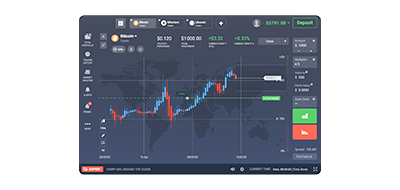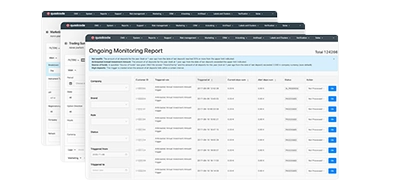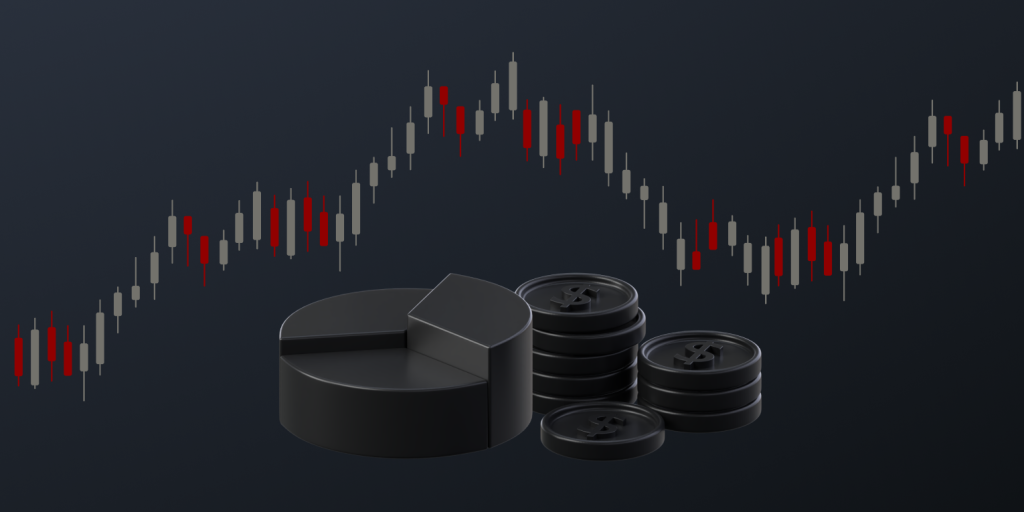Back

Technology
Market Maker vs Liquidity Provider: What Is The Difference?

Written by:
Demetris Makrides
read
Published:
March 15, 2024Updated:
May 3, 2024views
Table of contents
In today’s rapidly evolving financial landscape, liquidity remains a cornerstone for the effective functioning of markets. Brokerages, standing at the forefront of these markets, need a deep understanding of the entities that facilitate liquidity: Market Makers and Liquidity Providers. Recognizing their distinct roles and strategies, especially for brokerage owners, is pivotal. This article delves deep into these two pillars, highlighting their operations, advantages, and challenges.
Understanding Market Makers
Market Makers act as both buyers and sellers in the financial market. Their primary function is to ensure continuous liquidity in the marketplace, effectively bridging the gap between supply and demand. By quoting bid (buy) and ask (sell) prices for an asset, they signal their willingness to engage in trades. In doing so, they provide an essential service by ensuring assets are always available for trading, regardless of broader market conditions.
Imagine a scenario where there aren’t enough sellers for a particular asset. In such a situation, a trader wanting to purchase might find it challenging to locate a suitable seller. Here, the market maker steps in, agreeing to sell the asset. Conversely, if there aren’t enough buyers, the market maker would buy the asset. By continually adjusting their quoted prices and inventory based on market dynamics, they ensure that traders can always find a counterpart for their trade.
Benefits for Brokerages and Businesses:
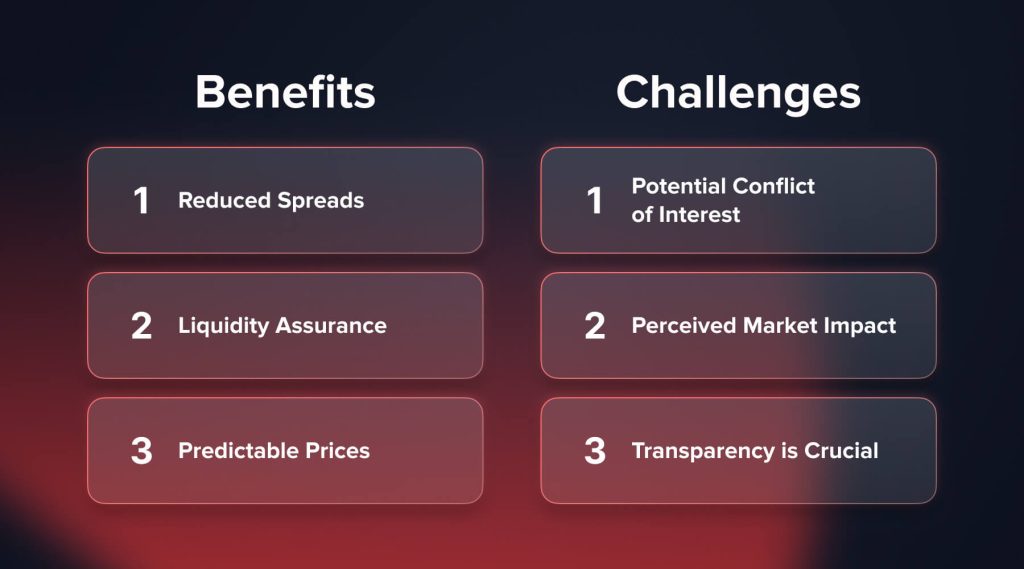
- Reduced Spreads: With market makers continually quoting bid and ask prices, the difference between these prices (the spread) tends to be narrower. A tighter spread can make trading more cost-effective, which can be particularly appealing to frequent traders.
- Liquidity Assurance: Market makers provide a safety net, ensuring there’s always a buyer or seller on the other end. This is particularly crucial in less liquid markets or during high volatility. For brokerages, consistent liquidity is a significant advantage, ensuring smooth operations and client satisfaction.
- Predictable Prices: With the continuous presence of market makers, price fluctuations tend to be less abrupt. The constant stream of bid and ask quotes can lead to more stable pricing, which is beneficial for traders and, by extension, the brokerages they trade with.
Challenges and Considerations:
- Potential Conflict of Interest: Since market makers profit from the spread, they might be inclined to manipulate bid and ask prices to their advantage. This inherent conflict of interest can sometimes lead to traders getting slightly less favorable prices.
- Perceived Market Impact: There’s a perception that because market makers can take the opposite side of a trade, they might influence asset prices. While their primary role is to provide liquidity, large market makers, due to their sheer volume, can have a noticeable impact on market direction.
- Transparency is Crucial: For brokerages, associating with market makers necessitates transparency. Clients should be informed if a brokerage’s primary liquidity source is a market maker, and any potential conflicts of interest should be disclosed. An open communication channel ensures that trust remains intact.
Understanding Liquidity Providers
Liquidity Providers (LPs) are the cornerstone for efficient trading in financial markets. Unlike market makers who actively create a market by quoting both buy and sell prices, liquidity providers typically offer asset prices based on the prevailing market conditions. Their primary aim is to add depth to the market, ensuring that large orders can be executed without dramatically influencing asset prices.
LPs, by virtue of their expansive financial reserves, can handle sizable transactions that might otherwise destabilize smaller markets. When traders wish to execute large trades, they tap into the liquidity these entities provide, ensuring minimal slippage and efficient order fulfillment. It’s a symbiotic relationship: while traders benefit from the depth, liquidity providers earn from the trade volume.
Types of Liquidity Providers and Implications:
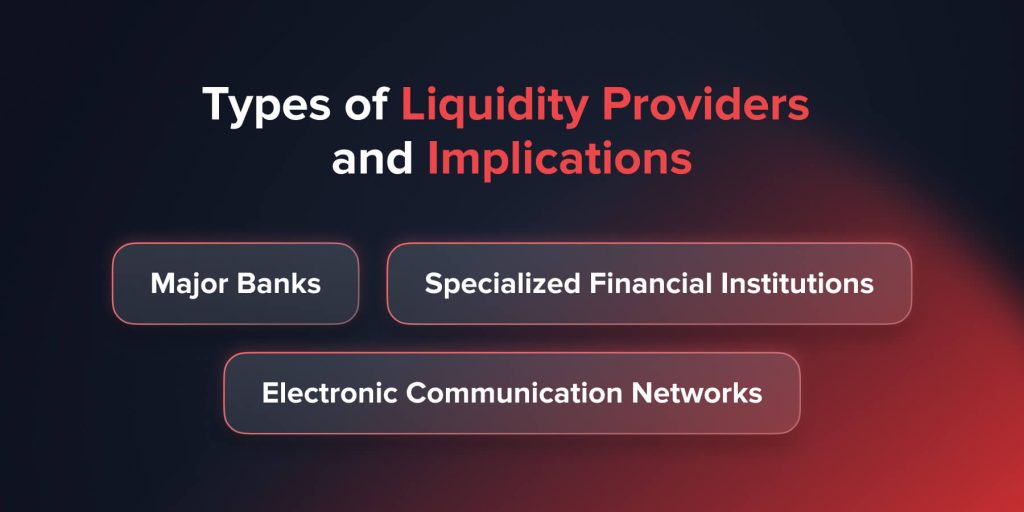
- Major Banks: Some of the world’s largest banks, such as Goldman Sachs, JPMorgan, and Citibank, act as primary liquidity providers. With their vast financial resources, they can offer significant liquidity, making them a preferred choice for many brokerages. However, their scale might sometimes mean less flexibility in contract negotiations.
- Specialized Financial Institutions: These are firms specifically designed to offer market liquidity. While they might not match the scale of major banks, they can provide more specialized or niche offerings, catering to specific market segments.
- Electronic Communication Networks (ECNs): These automated systems match buy and sell orders for assets, acting as a virtual liquidity provider. ECNs can offer more transparent pricing, as they display the best available bid and ask quotes from multiple market participants.
Advantages for Business Operations:
- Competitive Spreads: Collaborating with multiple LPs allows brokerages to shop for the best prices, ensuring tighter spreads for their clientele. This is especially valuable for brokerages catering to high-frequency traders where even minor price improvements can significantly impact profitability.
- Optimal Trade Execution: With deeper liquidity pools, large orders get fulfilled more efficiently, minimizing the adverse impact on asset prices. This ensures that even institutional clients or those trading in large volumes experience minimal slippage.
- Risk Diversification: Engaging with various LPs helps brokerages diversify their operational risk. In the unlikely event of an LP facing issues, having multiple providers ensures that trading can continue seamlessly.
- Attracting a Wider Client Base: A well-structured liquidity pool, with competitive pricing and efficient order execution, can be a significant draw for potential clients. It demonstrates a brokerage’s commitment to providing the best possible trading environment.
Key Distinctions between Market Makers and Liquidity Providers
The worlds of market makers and liquidity providers often intersect, yet they operate with distinct mechanisms and objectives. For brokerage owners and business heads, discerning their differences is vital for strategic alignment and efficient operations.
Operational Dynamics:
- Market Makers
They play a proactive role in the markets. Market makers, by their very design, actively create a two-sided market. They quote both buying and selling prices for an asset, ensuring that there is always a counterparty available for traders, irrespective of market conditions. Their operational model revolves around facilitating continuous trading even in less liquid assets or during times of market stress.
- Liquidity Providers
Their role is more passive. Rather than dictating prices, LPs offer assets based on current market rates. They enhance the depth of the market, ensuring trades can be executed without dramatic price shifts, which is especially important for sizable trades. Their focus is on filling orders rather than determining the price
Influence on Asset Pricing and Execution:
- Market Makers
Their influence can lead to more predictable pricing, which is especially beneficial in markets where liquidity is sporadic. The double-sided quoting ensures that spreads remain narrower, providing a more stable trading environment. However, this might sometimes mean that traders might not always get the most favorable prices, especially if the Market Maker is the dominant entity in a particular asset class.
- Liquidity Providers
In markets with many liquidity providers, competition drives more favorable prices for traders. Their depth ensures that even large trades can be executed with minimal price impact. This is particularly advantageous in highly liquid markets, where the sheer volume of trading and the presence of multiple LPs can lead to very competitive spreads.
Risk Management for Brokerages:
- Market Makers
Engaging primarily with a single or limited market maker can introduce a specific counterparty risk. If a market maker fails to honor its obligations or encounters financial difficulties, it can disrupt the trading ecosystem. For brokerages, it’s essential to assess the financial health and credibility of their chosen market makers.
- Liquidity Providers
Diversifying across multiple LPs can significantly mitigate risks. If one LP faces challenges, the presence of alternative providers ensures that trade execution remains unaffected. Moreover, with multiple entities vying for business, brokerages can often negotiate better terms and pricing.
Capital Requirements and Commitment:
- Market Makers
They typically need substantial capital reserves. Given their role in actively quoting both buy and sell prices, market makers often maintain significant capital to manage the risks associated with holding positions, especially in volatile market situations.
- Liquidity Providers
LPs don’t necessarily require the same depth of capital reserves as market makers. Their primary function is facilitating trades, which often means they offset positions more frequently and may not hold them for extended periods.
Role in Market Stability:
- Market Makers
By committing to buy and sell assets, they often act as a stabilizing force, especially in niche or less liquid markets. Their continuous presence can prevent abrupt market gaps and provide a sense of reliability to other market participants.
- Liquidity Providers
While they also contribute to market stability, their impact is often more pronounced in widely-traded, liquid markets. By offering depth, they ensure smooth trade executions, even during high-volume trading times.
Nature of Relationships with Brokerages:
- Market Makers
Relationships are often more structured. Brokerages might have specific agreements detailing the prices, volumes, and terms of engagement, ensuring a predictable flow of trades.
- Liquidity Providers
Engagements tend to be more fluid. While there might be overarching agreements in place, the day-to-day interactions are driven by market dynamics, with prices, volumes, and spreads continuously adjusting based on real-time conditions.
Technological Interfaces and Integration:
- Market Makers
Given their active role in price quotes, they often have sophisticated technological interfaces, allowing real-time communication of bid and ask prices. Integration with brokerages might require tailored tech solutions to ensure seamless data flow.
- Liquidity Providers
Their systems are designed for speed and volume. The emphasis is on efficiently handling many trade requests, often from multiple brokerages simultaneously. Integration is typically more straightforward, emphasizing quick order execution.
Regulatory Landscape and Compliance
The financial world is heavily intertwined with regulations and compliance mechanisms. When brokerages deal with market makers and liquidity providers, adhering to these rules isn’t just a matter of legality; it’s about maintaining credibility and ensuring the smooth functioning of the financial ecosystem.
Brokerages exist in a space where trust is paramount. When clients, be they individual traders or institutional entities, entrust their capital to a brokerage, they need assurance that their investments are safe, and the brokerage’s operations are transparent and fair. This trust is cultivated and fortified by strict adherence to regulatory guidelines.
Differing Regulatory Frameworks:
Different regions and countries have their own sets of regulations concerning brokerages and their interactions with market makers and liquidity providers. For example:
- The European Securities and Markets Authority (ESMA) in Europe has specific rules governing Contracts for Differences (CFDs) and their interactions with Market Makers.
- In the US, the Securities and Exchange Commission (SEC) and the Commodity Futures Trading Commission (CFTC) have guidelines about market-making activities, especially concerning transparency and fair pricing.
- Asia-Pacific regions like Singapore and Hong Kong have their own regulatory bodies, like the Monetary Authority of Singapore (MAS) and the Securities and Futures Commission (SFC), with specific compliance requirements.
Navigating the Regulatory Maze:
Given the diversity of regulatory bodies and their guidelines, brokerages must:
- Stay Informed: Regularly update themselves on any regulatory changes, mainly if they operate in multiple jurisdictions. It’s crucial to have a dedicated compliance team or advisor familiar with local regulations.
- Ensure Transparency: Brokerages should maintain precise records of all transactions, especially those involving market makers and liquidity providers. These records must be easily accessible for audits or regulatory inspections.
- Build Relationships: Having open communication channels with regulators can be invaluable. Engaging in regular dialogues, attending industry seminars, or participating in consultation rounds can give brokerages a clearer perspective on regulatory expectations and emerging trends.
For brokerage owners, understanding the regulatory landscape isn’t just about avoiding penalties; it’s a strategic necessity. Aligning operations with regulations can enhance the brokerage’s reputation, attracting more discerning clients and partners. It can also prevent costly disruptions that can arise from regulatory infringements.
KEY TAKEAWAYS
- While Market Makers actively set and ensure liquidity with buying and selling prices, Liquidity Providers offer depth and facilitate larger trades without drastically impacting asset prices.
- Market Makers ensure continuous trading with stable prices, whereas Liquidity Providers provide competitive pricing in liquid markets.
- Market Makers play a proactive role in price determination, whereas Liquidity Providers passively respond to prevailing market conditions.
Forging Effective Partnerships and Collaborations
In the intricate fabric of the financial ecosystem, partnerships and collaborations are threads that weave together institutions, enhancing the collective strength and reach of the entities involved. Whether with market makers or liquidity providers, these relationships aren’t just about contracts; they’re strategic alliances that can dictate the trajectory of a brokerage’s success.
The Cornerstones of Effective Partnerships:
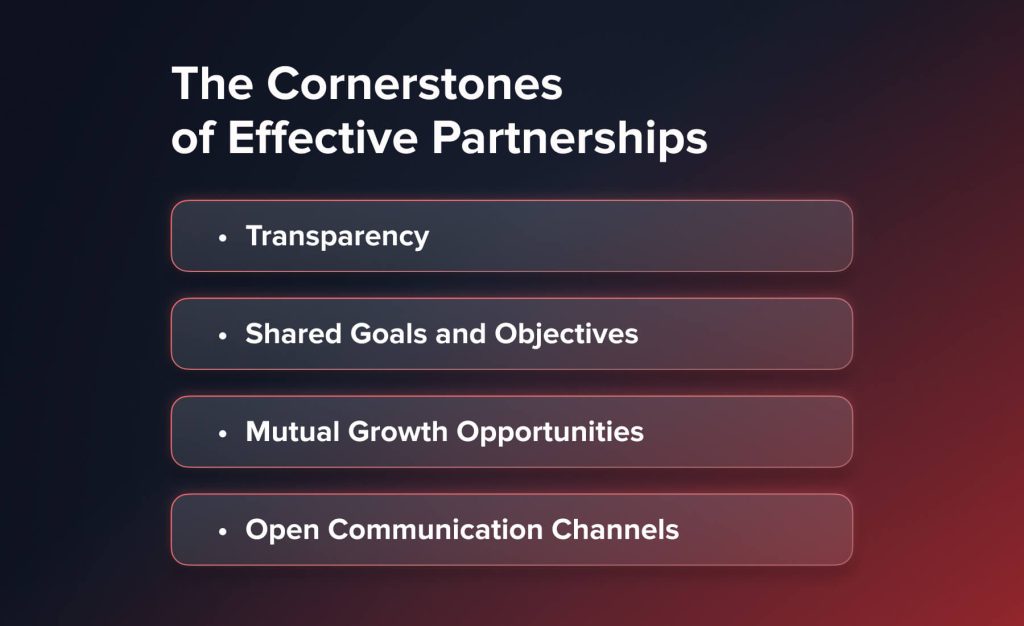
- Transparency: Transparency is the bedrock of any solid partnership in the financial world. Both parties must have clear visibility into the terms of the partnership, operational processes, and any potential challenges. Tools like shared dashboards or regular performance reports can foster transparency, ensuring both sides remain aligned.
- Shared Goals and Objectives: For a partnership to thrive, there must be an alignment of interests. This means both parties have a shared vision of where they want the collaboration to go and what they hope to achieve. This alignment can be fostered through regular strategy sessions and open dialogues about market trends, challenges, and opportunities.
- Mutual Growth Opportunities: A collaboration should not be a zero-sum game. The best partnerships are those where growth for one party translates to growth for the other. For brokerages, this could mean access to better liquidity or more favorable terms. For market makers or liquidity providers, it could translate to a broader client base or increased trading volumes.
- Open Communication Channels: The financial landscape is dynamic, with market conditions and regulatory guidelines constantly evolving. Hence, it’s crucial to maintain open channels of communication. Regular check-ins, feedback sessions, and joint training programs can ensure that both parties are on the same page and can adapt swiftly to changing scenarios.
For brokerages eyeing long-term growth and stability, strategic collaborations with market makers or liquidity providers can be a game-changer. However, these relationships should not be viewed as static. They’re dynamic entities that must be nurtured, evaluated, and fine-tuned to ensure they remain mutually beneficial in an ever-evolving financial landscape. By emphasizing transparency, shared growth, and continuous assessment, brokerages can harness the true potential of these collaborations, propelling them toward sustained success.
Conclusion
Navigating the intricate realms of market makers and liquidity providers is crucial for modern brokerages. By understanding their roles, advantages, and potential pitfalls, brokerages can make informed decisions, ensuring sustainable growth and fostering trust among clients in the ever-evolving financial landscape.
